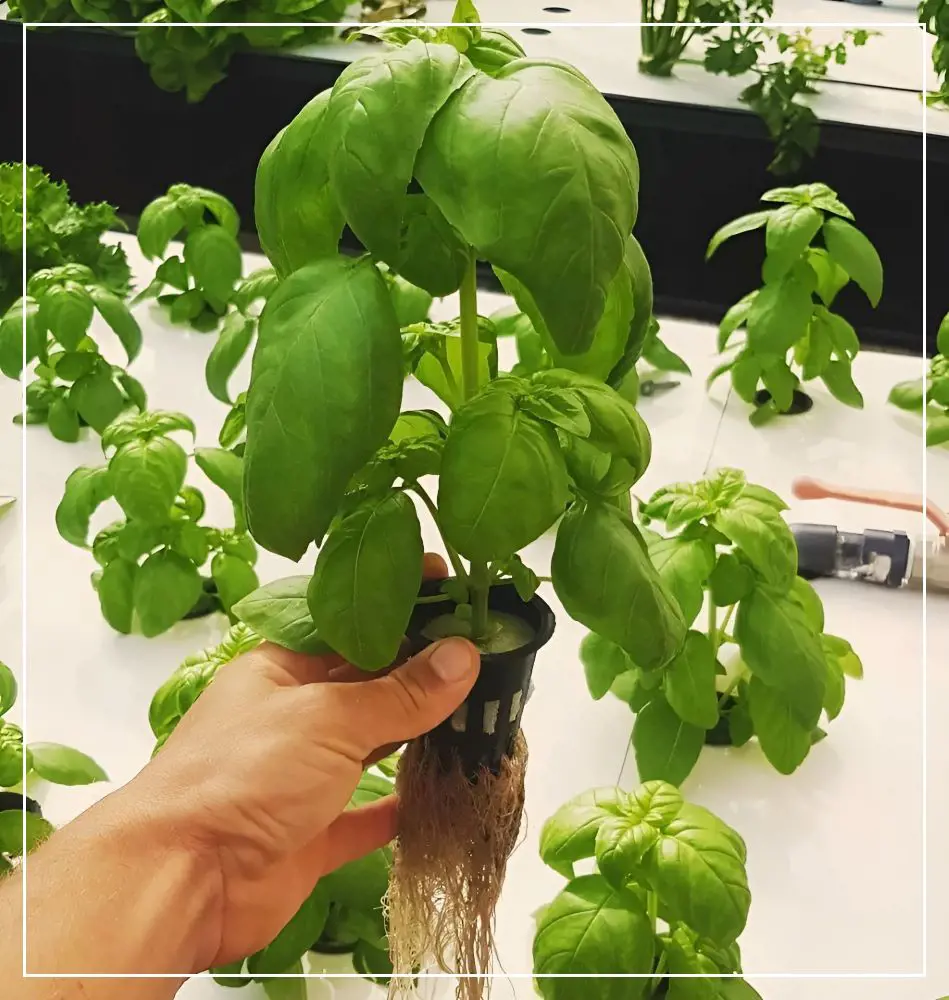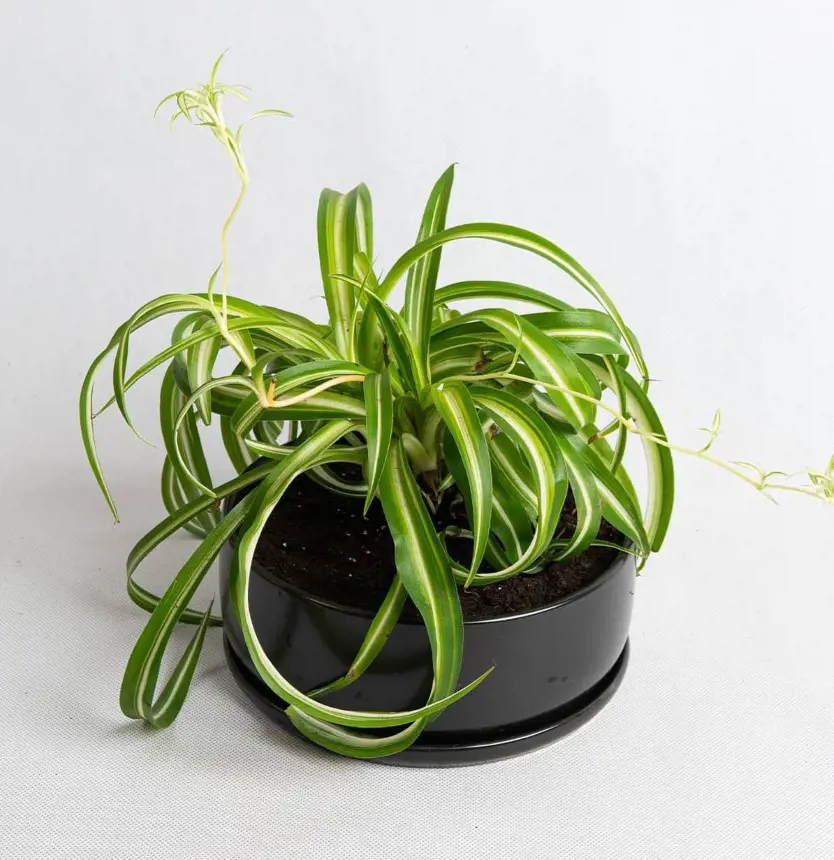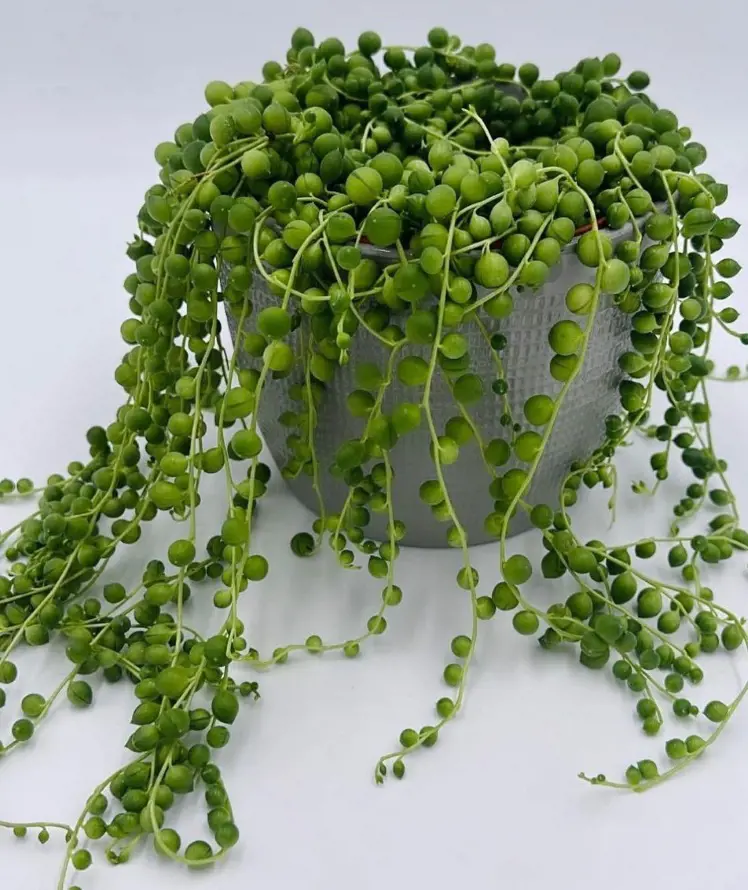How To Propagate Snake Plants

This post may contain affiliate links. If you make a purchase through links on our site, we may earn a commission.
Snake plant also known as Mother-in-law's tongue is an interesting and beautiful succulent houseplant that adds a creative touch to any space and is quite easy to grow. It develops from rhizomes that, as the plant ages, clump together and flourish. Snake plants can grow from 3 to 8 feet tall in the right conditions.
Since snake plants can tolerate some neglect which makes them ideal gifts for those who struggle with gardening. Or, if you are a flower enthusiast who loves to grow plants with propagation methods, then this article is for you. We will discuss the propagation of snake plants, including their methods and steps in this blog.
Snake Plant Propagation Methods
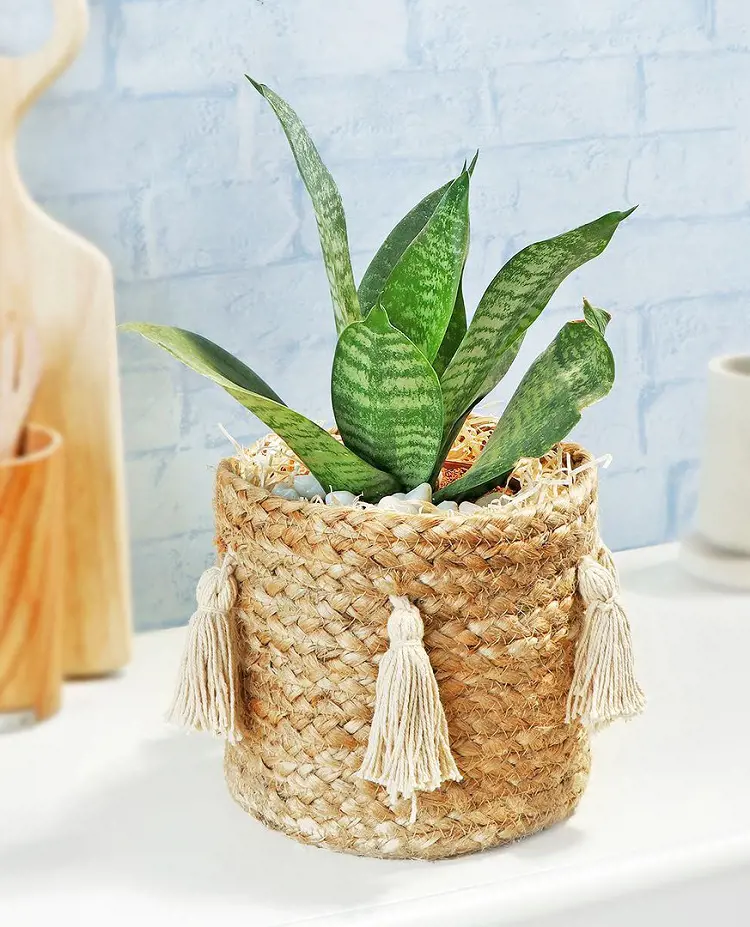
Snake plants can be propagated through various methods, and here are a few common ones:
Leaf Cuttings
One of the most popular methods involves taking healthy leaf cuttings and planting them in soil. The cuttings develop roots and grow into new plants.
Division
This method involves separating a mature snake plant into smaller sections, each with its own roots. These sections are then planted individually, allowing for the growth of multiple new plants.
Rhizome Division
Snake plants produce rhizomes and horizontal underground stems. By dividing the rhizomes and planting them separately, you can propagate the plant and encourage the growth of new individuals.
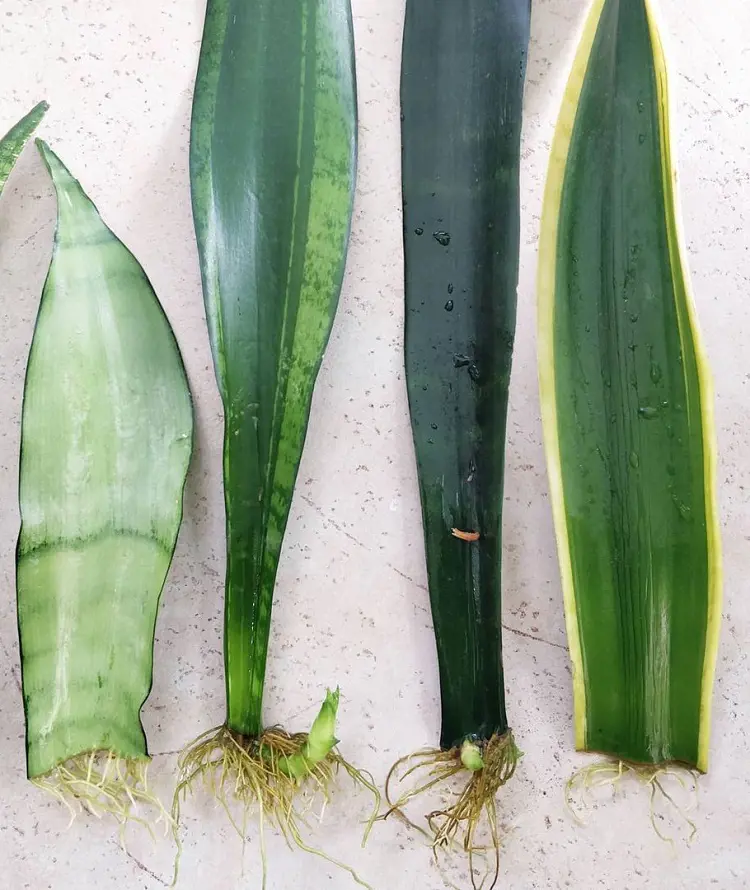
Offsets or Pups
Snake plants often produce offsets or pups, which are small shoots that grow at the base of the main plant. These can be separated and planted on their own to create new plants.
Water Propagation
Cuttings can be placed in water until they develop roots before being transferred to soil. This method is an alternative to planting directly in soil and allows you to observe root development.
Suckers
Similar to offsets, suckers are small shoots that emerge from the base of the plant. These can be separated and planted to propagate the snake plant.
Each propagation method has its own advantages, and the choice of method often depends on personal preference, the health of the plant, and the desired outcome.
Here are 10 easy steps to propagate a snake plant using leaf cuttings:
1. Select A Healthy Mother Plant
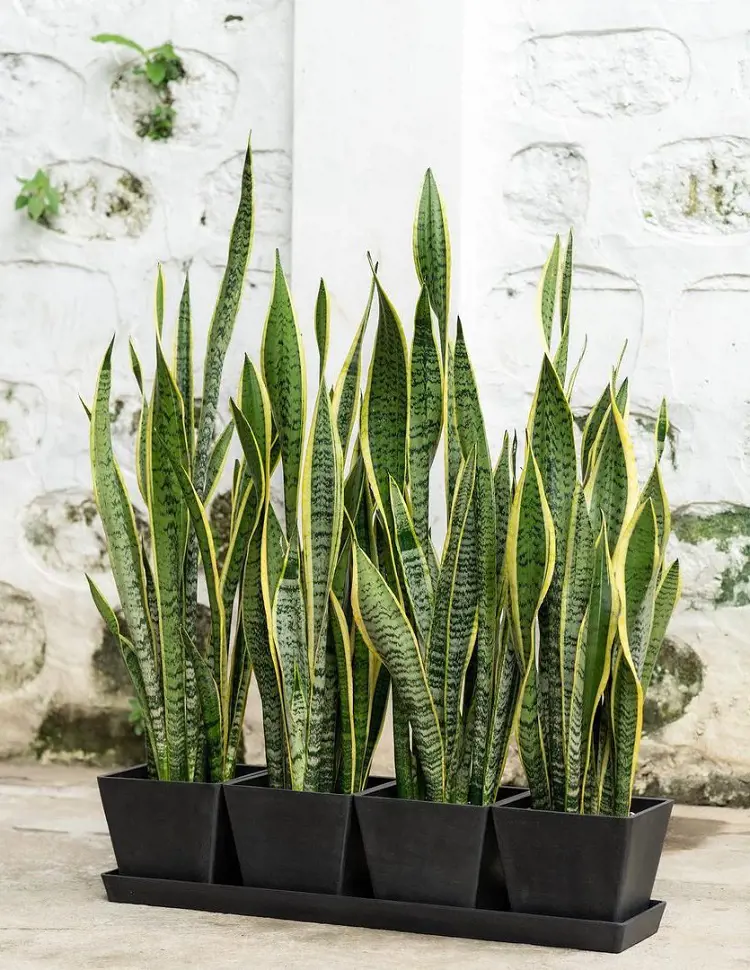
When you're growing new snake plants, it's super important to start with a healthy mom plant. A healthy mother ensures strong and thriving baby plants while minimizing the risk of diseases or pests. The good roots and abundant nutrients in a healthy mother plant provide an ideal start for vigorous growth in the new plants.
These babies adapt well to changes, handle stress effectively, and are more likely to last, showcasing vibrant colors and well-shaped leaves. So, picking a healthy mom plant is a big deal, it helps the new snake plants grow well, stay healthy, and look great.
2. Gather Trimming Materials
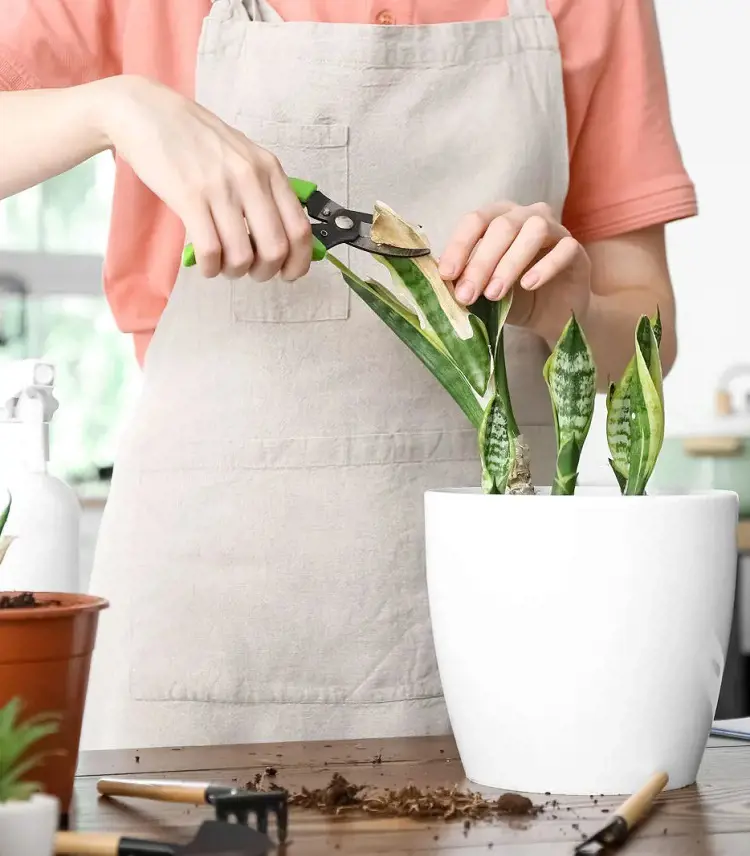
While considering propagating a new snake plant, you should use a clean, sharp knife or scissors for cutting. This is because clean tools prevent the spread of diseases, keeping both the parent plant and the new cutting healthy. Sharp tools make precise cuts, helping the plant heal faster and reducing the risk of infections.
A well-healed cutting is more likely to grow into a healthy new plant. Using clean, sharp tools also makes the whole process less stressful for the plant, which is key for successful growth. So, choosing the right tools ensures the health and success of both the original plant and the new one you're creating.
3. Choose A Healthy Leaf
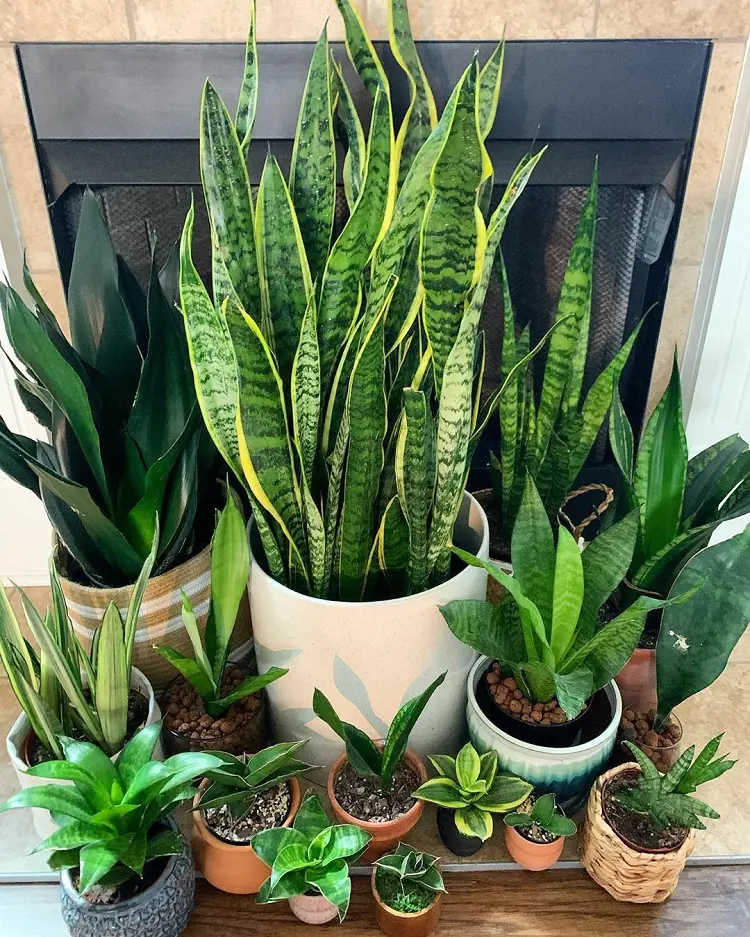
You should not only use clean cutting tools but also choose a healthy leaf for successful snake plant propagation. A healthy leaf ensures the new plant inherits the best qualities, supporting robust growth with the necessary nutrients. This choice lowers the risk of transferring diseases or pests to the new plant, preventing potential setbacks.
Additionally, a healthy leaf handles the stress of propagation better, adapting to the new environment, promoting faster root development, and ensuring overall success. In summary, selecting a healthy leaf is fundamental for the well-being and vitality of the new snake plant, minimizing risks and ensuring the overall success of the propagation.
4. Cut The Leaf
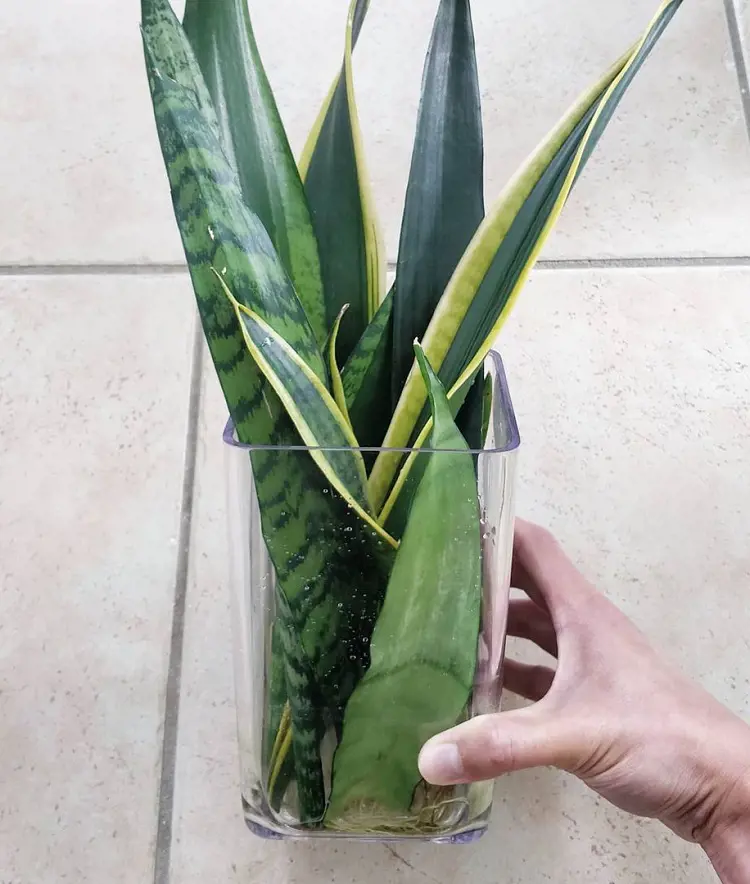
When you're making new snake plants by cutting a leaf, it's usually better to choose a mature leaf rather than a new one. Here's why: Mature leaves have had time to gather lots of nutrients, which helps the new plant grow well. These older leaves are also stronger and sturdier, making them better for the cutting process.
When you use a mature leaf, the new plant is more likely to develop strong roots, which are essential for its overall health. Plus, mature leaves are often healthier, reducing the chance of any problems for the new plant. So, picking a mature leaf sets the stage for a successful and healthy new snake plant.
5. Trim The Leaf Into Sections
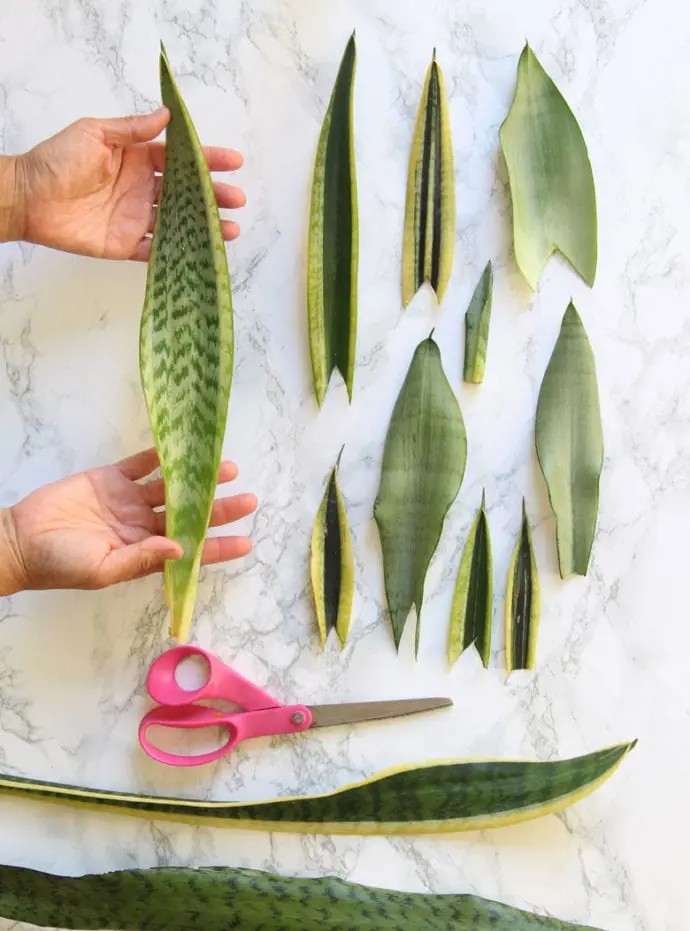
To enhance the growth of new snake plants from a leaf, consider cutting that leaf into smaller sections. By doing so, you can create more than one new plant from just one leaf, with each cut section having the potential to become a whole new plant. Cutting the leaf into sections encourages the development of roots, making the new plants stronger.
Additionally, dividing the leaf helps the plant utilize its nutrients more effectively, ensuring that each new plant gets what it needs to grow well. If there are any damaged parts on the leaf, cutting it into sections allows you to focus on the healthier parts for propagation. Working with smaller sections also makes planting easier, increasing the chances of success in growing new snake plants.
6. Optional: Use Rooting Hormone
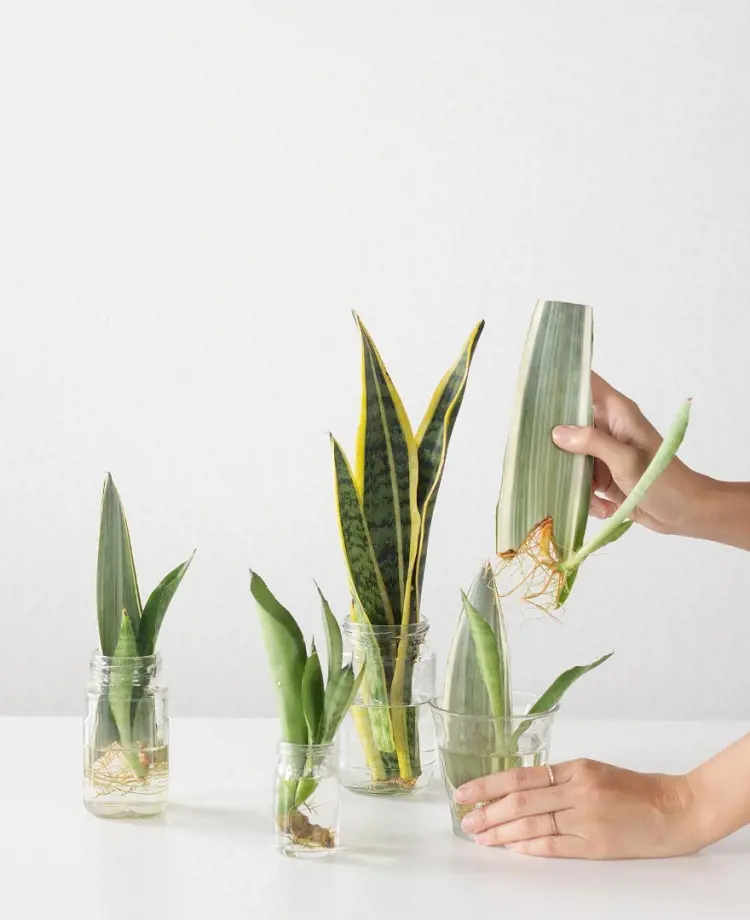
Using rooting hormone after cutting for propagation is something you can choose to do, but it's not necessary. Snake plants have a natural ability to grow roots on their own, even without the help of additional hormones. These plants are quite hardy, and they can often root successfully without any artificial aids.
The use of rooting hormone is optional, and some people may prefer not to use it due to factors like cost, availability, or personal preferences. Snake plants generally have a high success rate in propagation without the need for rooting hormone, making it a choice rather than a requirement. People may decide to use it based on their own experiences and what works best for them.
7. Allow Cuttings To Dry

It's a good idea to let the cut end of a snake plant leaf dry for a day or two after you've made the cut. This drying period helps in the formation of a protective layer called a callus at the cut site. This callus acts as a barrier, preventing the cut end from rotting when it's planted in soil.
Allowing the cutting to dry reduces the risk of issues like rot and fungi during the early stages of propagation. Additionally, a dried and callused cut end provides better conditions for the development of roots when the cutting is eventually planted in the soil. Handling and planting a dried cutting is also easier, contributing to a smoother and more successful propagation process.
8. Plant The Cuttings
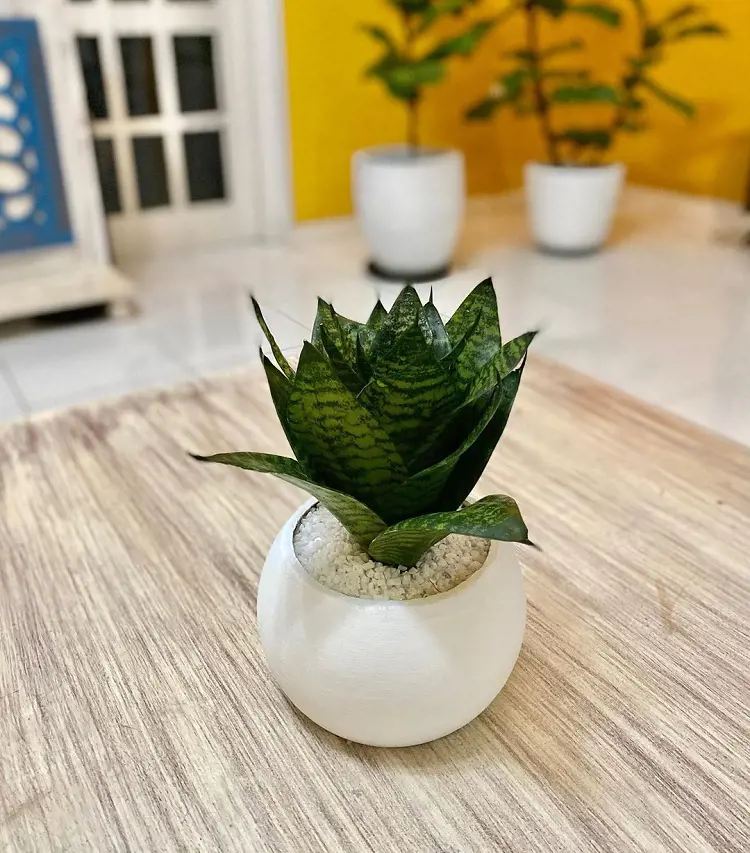
Once you've cut a piece of the snake plant and let it dry, the next important step is to plant it in the soil. To do this, you'll need a well-draining potting mix, preferably one meant for succulents or cacti. This type of soil helps prevent water from collecting around the cutting, which could harm its growth.
Carefully insert the dried end of the cutting into the soil, making sure it's about an inch deep and securely positioned. Following these steps and providing the right care afterward gives the snake plant cutting the best chance to grow roots and become a healthy new plant. This process, combined with proper attention, sets the stage for a successful propagation outcome.
9. Water The New Plant

Even though a snake plant is a low-maintenance plant, watering your newly planted snake plant cutting is important. Keep an eye on the soil moisture, and if it's dry, it's time to water. Ensure the pot has holes at the bottom for drainage, so too much water doesn't harm the cutting.
Adjust how often you water based on factors like temperature and humidity. Since the cutting is still growing roots, provide enough water for growth without making the soil too wet. Snake plants are tough and can handle not being watered often, so it's better to water less and keep your new plant healthy and strong.
10. Provide Indirect Light
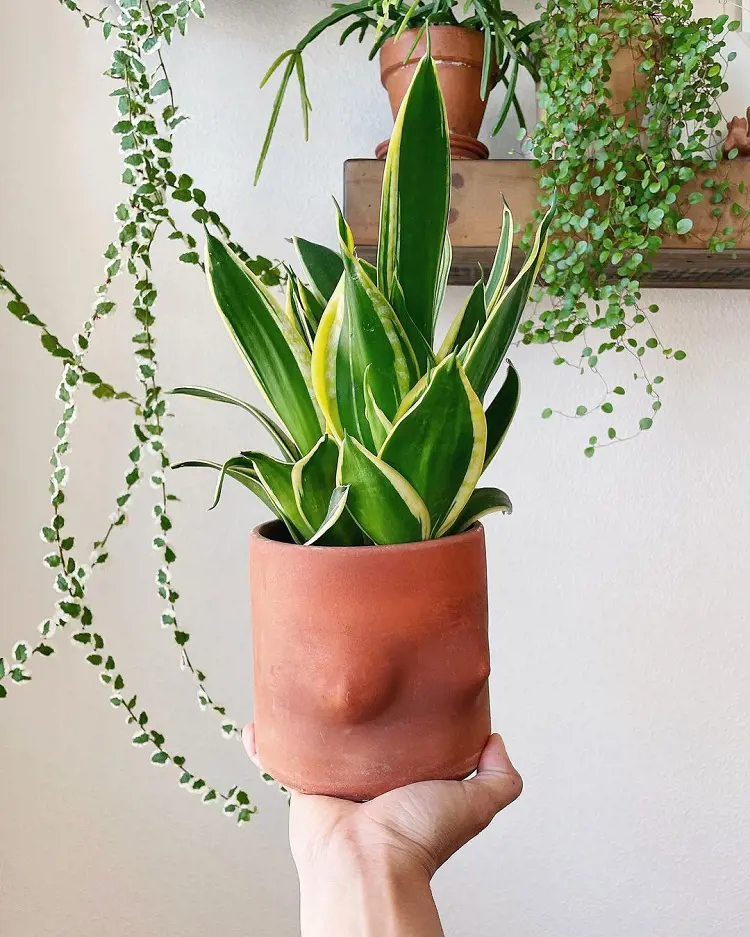
Offering indirect light to a newly planted snake plant is essential for its well-being. Direct sunlight can be harsh on the delicate leaves of a recently planted cutting, potentially causing sunburn. Indirect light provides a more gradual introduction to sunlight, reducing stress on the plant as it establishes roots and adapts to its new surroundings.
This gentler exposure helps prevent shock and allows the plant to focus on healthy root development without the risk of damage. Since snake plants are low-light indoor plants, providing indirect light replicates their preferred conditions and creates an optimal environment for steady and robust growth. Additionally, indirect light helps maintain stable soil moisture levels by preventing overheating.
Recent posts
How To Propagate
How To Propagate
How To Propagate Cactus In 9 Ways
Propagation involves creating new plants from existing ones. In nature, this often happens through seed formation after flowers are pollinated. However, due to the shrinking natural habitats of cactus, it’s essential to propagate and care for t...
How To Propagate
Basil Propagation Methods: Flowers, Seeds or Cuttings
In the realm of culinary delights and garden magic, basil stands as a beloved herb, prized for its aromatic leaves and versatility in the kitchen. Yet, unlocking the secrets of basil propagation opens up a whole new realm of possibilities. From the d...
How To Propagate
How To Propagate Monstera Deliciosa
Monstera plants are popular indoor plants, making homes and offices cheerful and stylish. They're not just easy to grow but also thrive in any indoor setting. But if you're wondering how to make more Monstera plants, it might seem tricky. Start...
How To Propagate
How To Propagate Spider Plant
The Spider Plant is a resilient indoor plant appreciated for its arching leaves and spider-like offshoots. It's an ideal choice for plant enthusiasts due to its easy care. Propagating these plants is also simple and can be done in various ways, such ...
How To Propagate
How To Propagate String Of Pearls
Propagating String of Pearls is a fascinating and fulfilling process that allows you to create new plants from an existing one. This plant is a cute succulent from South Africa, known scientifically as Senecio Rowleyanus. It has long, hanging stems w...
How To Propagate
How To Propagate Roses In 12 Steps
Propagating roses might sound fancy, but it's a way to grow new rose plants from existing ones. It's like making baby roses. If you have a beautiful rose bush and want more just like it, you can do this through a process called propagation. Here's a ...

